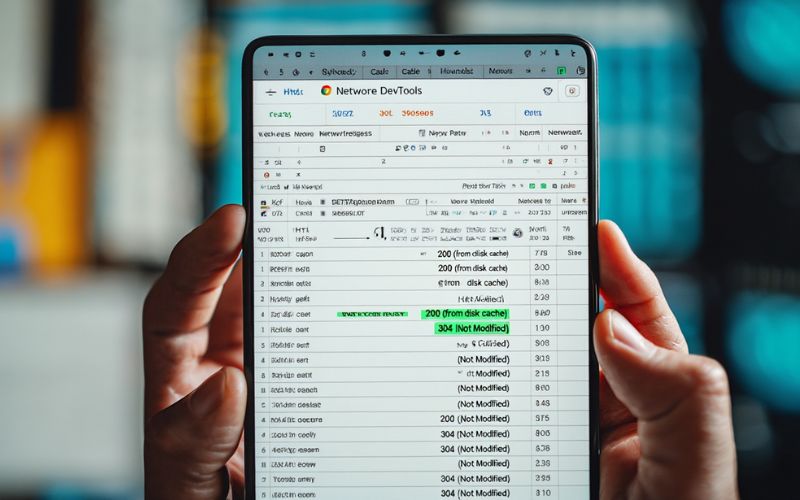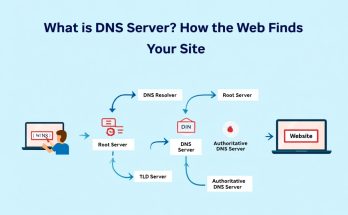What Is Browser Cache and why does it matter? Simply put, browser cache helps your website load faster by storing static files like images, CSS, and JavaScript on a user’s local device. This reduces the need to re-download content on return visits, improving speed, user experience, and even SEO performance. In this quick guide, we’ll explain how browser caching works and how you can implement it to optimize your website effectively.
What Is Browser Cache?
The browser cache is a temporary storage system used by web browsers to save copies of web resources like images, stylesheets (CSS), JavaScript files, and more locally on a user’s device. Instead of downloading these elements from the server every time a user visits your site, the browser can quickly load them from the local cache.
This results in:
- Faster page load times
- Reduced bandwidth usage
- Improved user experience

Speed comparison with and without cache
In short, caching allows your site to feel “snappier,” especially for returning visitors.
How Browser Caching Works
Here’s a simplified overview:
- When a user visits a website, the browser requests content from the server.
- If the content isn’t cached, it’s downloaded and stored locally.
- On subsequent visits, if the content hasn’t expired, the browser loads it from the local cache instead of contacting the server again.
The cache stores this data temporarily based on rules set by the server. These rules are defined using HTTP headers, including:
Key Cache-Related Headers
- Cache-Control: Sets caching policies (e.g., max-age, no-store, public, private).
- Expires: Sets an expiration date for a resource.
- ETag: A unique identifier for a resource that lets the browser check if the cached version is still valid.
- Pragma: A legacy HTTP/1.0 header mainly used for backward compatibility.
How to Set Up Browser Cache on Your Website
There are three common ways to configure browser caching:
1. Web Server Configuration
Apache Example:
apache
<filesMatch “.(jpg|jpeg|png|gif|css|js)$”>
Header set Cache-Control “max-age=2592000, public”
</filesMatch>
Nginx Example:
nginx
location ~* \.(jpg|jpeg|png|gif|ico|css|js)$ {
expires 30d;
add_header Cache-Control “public”;
}
2. Using PHP Headers
For dynamic content, you can control cache using PHP:
php
<?php
header(“Cache-Control: no-cache”);
header(“Expires: Sat, 26 Jul 1997 05:00:00 GMT”);
?>
3. Via CMS Plugins
If you’re using platforms like WordPress, you can implement caching policies via caching plugins like WP Rocket or W3 Total Cache.
How to Test Your Browser Cache
To see if caching is working:
- Open Chrome or Firefox Developer Tools.
- Reload the page and inspect the Network tab.
- Check the Status column for 200 (from disk cache) or 304 (Not Modified).

Browser DevTools interface shows cache status
These indicate resources were loaded from cache instead of re-downloading them.
Best Practices for Browser Caching
- Use long cache durations (e.g., 30 days) for static files.
- Avoid caching dynamic content unless necessary.
- Always test caching rules in different browsers.
- Use versioning (e.g., style.css?v=1.2) when updating cached files.
More than :
- What Is DNS Server? The Internet Shortcut You Never Knew You Needed
- What is Subnet Mask? A Beginner-Friendly Guide to IP Networks
Conclusion
Now that you understand what browser cache is and why it matters, it’s clear how crucial it is in improving your website’s performance. Leveraging browser caching not only speeds up page load times and reduces server load but also provides a smoother, more responsive experience for users—especially returning visitors.
While configuring browser caching policies may sound technical or complex at first, the truth is it can be implemented quite easily through various methods, such as server configuration, CMS plugins (like those for WordPress), or PHP headers. Setting up proper caching rules pays off in the long run—not just for speed, but also for SEO rankings, lower bounce rates, and better user retention.
If you’re running a website and haven’t yet optimized your browser cache, now is the time to do it. It’s one of the most effective yet simple ways to supercharge your site’s performance.
For more practical insights on web performance optimization, check out the Networking category at Softbuzz.net — your go-to hub for clear, actionable knowledge for both beginners and experienced webmasters alike.



